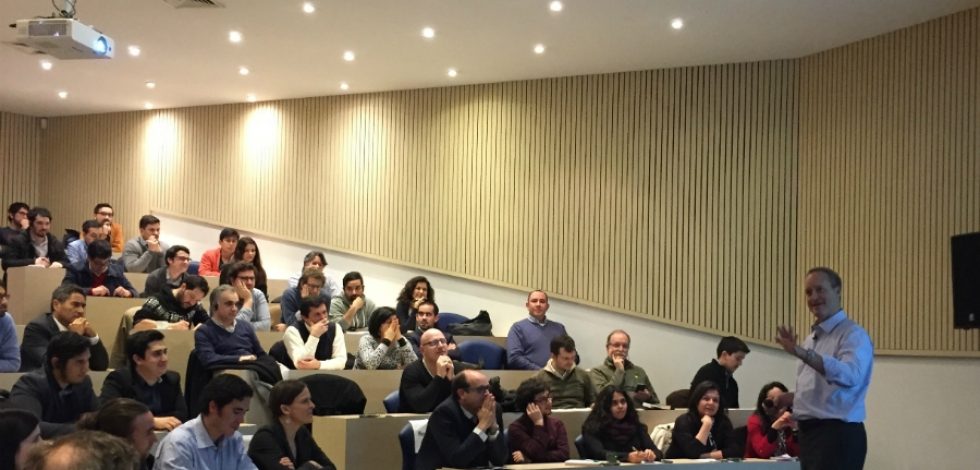
GobLab UAI, together with the Fiscal Expenditure Observatory in Chile and IBM made the talk “The Impact of Intensive Data Use”, where Steve Adler, IBM Chief Data Strategist, shared his experience on the use of big data in the public sector, particularly in the Colombian city of Medellín, where he serves as Chief Data Officer.

The impact of data use in the public sector: the case of Medellín
August 9, 2017
GobLab UAI, together with the Fiscal Expenditure Observatory in Chile and IBM made the talk “The Impact of Intensive Data Use”, where Steve Adler, IBM Chief Data Strategist, shared his experience on the use of big data in the public sector, particularly in the Colombian city of Medellín, where he serves as Chief Data Officer.
“What do you understand by the position of Chief Data Strategist?” Adler told attendees. The answers were varied, but he stayed with the simplest: someone who generates, collects and organizes data. “But these data are useless if if governments do not understand the benefit it can give citizens,” he said.
“Most cities are built from the observation of behavior and not through the use of data, which attracts attention, because today there is infinite information but we do not share it, we leave it for ourselves,” said the expert.
How to create a realistic vision?
Steve Adler shared what he thought worked in Medellín to create an objective look at the use of data through the following points:
Association of public and private organizations to move data with agility: Looking for how to sell the idea of data use in Medellín, Sadler proposed to carry out a detailed measurement of air quality, an idea that attracted the interest of private, governmental organizations and of the entire population, due to the great pollution problems of the city. Thus, he managed to teach the importance of the use of data and how that information collected could generate social change.
Leadership: Sell the importance of data use through the mayor, as he did in Los Angeles, United States. That he reports on how important it is to use data in the public space, generates closeness with people.
Open an open data portal: Obama asked, in his first administration, that his government be the most open in the world in terms of data use and created data.gob to encourage his colleagues to be part of the revolution that allowed large amounts of information were available to anyone. Adler defines this concept as Open Data: “free of access, with anonymous users and that can be downloaded to do what is deemed convenient.”
Focus on the culture of data sharing: Unlike the Obama case, it is difficult to implement this measure because of the bureaucracy in the public sector and because of fear of the use that will be given to the data: How will it be mixed with those found in another platform? Or what results can be obtained if they fall into the wrong hands?
Engaging citizens with the idea that the use of data builds new ecosystems: While the digital revolution is cutting jobs in certain areas, the use of data will bring an increase in jobs in the digital sphere and grow the economy. In addition, he proposes the idea of bringing the data in “shows” with the public to make them known.
Organize the data: Find categories that interest people and feel identified with them. For example, demo and geographic divisions.
Work as a team with peers: learn and share experiences.
Sadler concluded that “the main brake on the use of data is governments”, because it tends to “destroy” what the previous administration did, which hinders the advancement of technology. To make sure that this wouldn’t happen with their project in Colombia, they created the Medellín Data Strategy Council with financing that does not depend on the government of the day.
Advice for Chile:
Sadler said that while most government representatives still do not know the benefits of using large amounts of data or Big Data, the best thing to do is bring together private and public organizations to work together and, mainly, understand that “the future is built now.”



